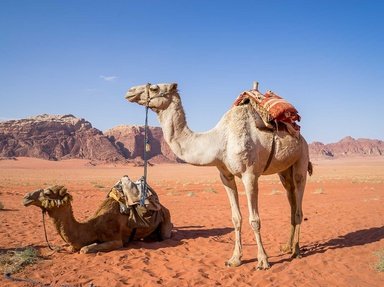Quiz Answer Key and Fun Facts
1. Dromedary and Bactrian are the two species of which camelid?
2. Which camelid is still considered to be wild, but a few domesticated ones can be found in some zoos and private farms?
3. Which camelid has been used as a livestock guard in North America since the 1980s?
4. The babies of which camelid are referred to as chulengos?
5. Which camelid was originally domesticated and bred by pre-Columbian societies thousands of years ago primarily for its fiber rather than as a beast of burden or for meat?
6. The males of one species of this camelid will show his dominance and try to attract a mate by showing his dulla. Which animal is this?
7. Which camelid was the only beast of burden used by the Incas, as well as being considered symbolically important, with figures of this animal buried with the nobility?
8. Alpacas practice good hygiene by using a communal dung pile, where all members of the herd relieve themselves.
9. Which camelid has been used by the military of various countries in times of war to help patrol and transport supplies?
10. Which camelid comes in two breeds, Huacaya and Suri, which are classified according to their fiber?
Source: Author
tiffanyram
This quiz was reviewed by FunTrivia editor
guitargoddess before going online.
Any errors found in FunTrivia content are routinely corrected through our feedback system.

